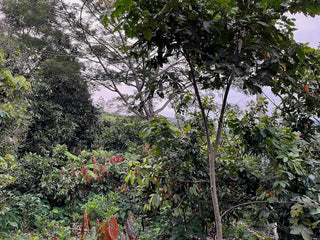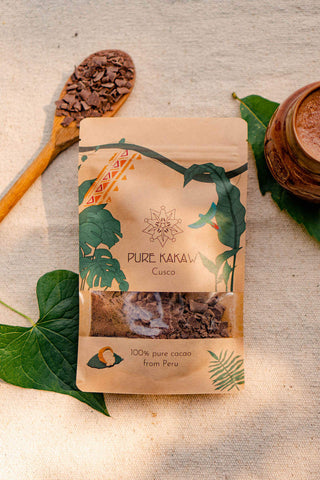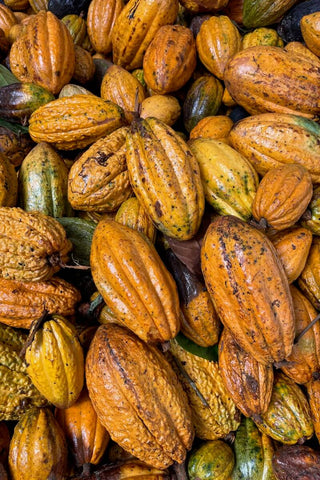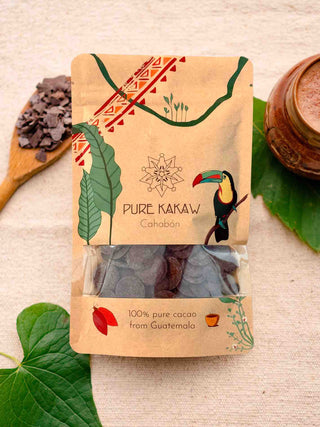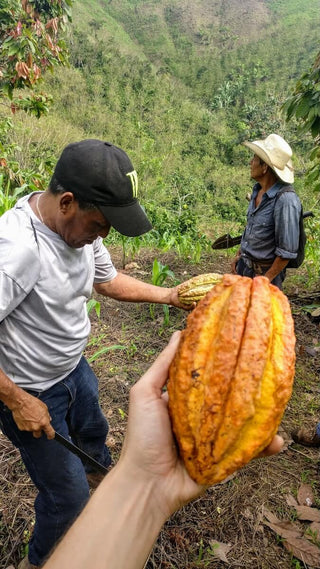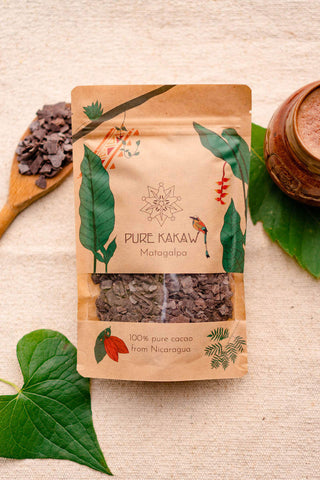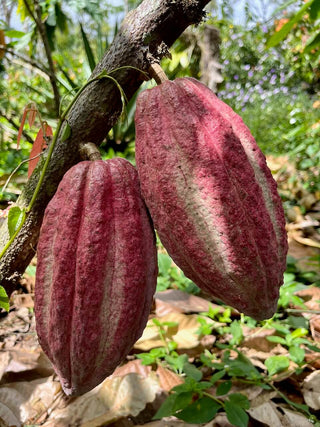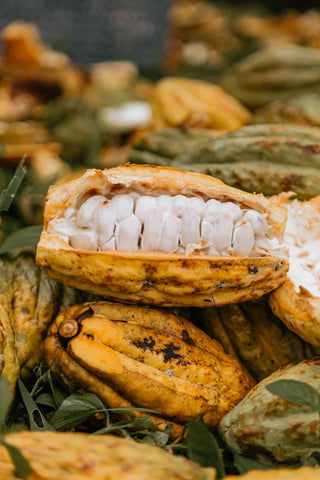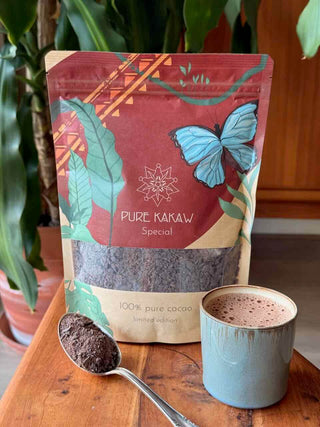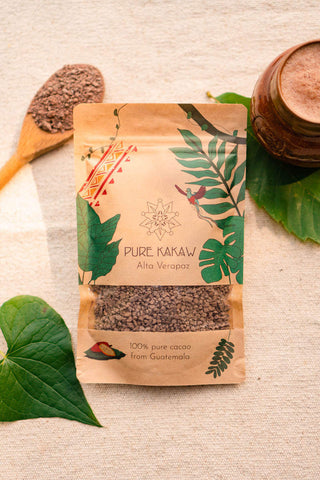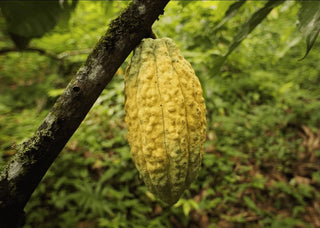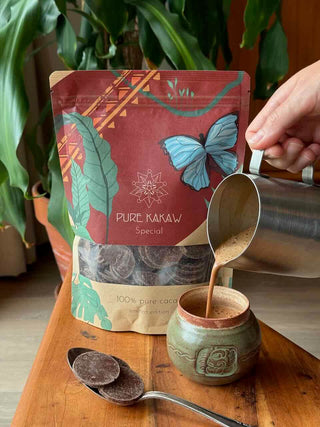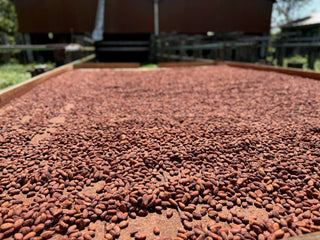When drinking cacao we like to take you all the way to where and how it grows. There are many ways to grow cacao. The cacao tree thrives when it’s part of a larger ecosystem that is diverse and full of life. It loves biodiversity.
Letting in nature and giving her space to grow creates an abundant ecosystem. Everything is connected and together the parts make it work. The cacao trees couldn’t live without the midges that pollinate their tiny flowers. These midges like to live and breed amongst banana and heliconia plants. Tall trees provide shade from the sun, like pacay, a native tree from Peru. Pacay is part of the Inga genus and fixes nitrogen from the air into the soil via its roots. Feeding other trees (like cacao!) and creating a healthy soil. In Guatemala the “madre de cacao” trees are often planted with cacao for this reason.


From the soil all the way up to the canopy, these tall trees like pacay, mango, old cacao, and many other native trees provide treetop walkways for the animals living there. Monkeys and squirrels jump from treetop to treetop, making their way through the forest. Squirrels are real cacao lovers. They like to eat the fruity flesh from the cacao pod. And they have great taste, they only pick cacao pods from the best quality trees. At Finca Paytiti in Peru, they love the squirrels. By watching which cacao trees the squirrels like best, they know which cacao seeds to use when planting new trees. A beautiful way of working with the signs of nature.

Fungi are an important part of the ecosystem too. There are many different fungi, some are unhealthy for cacao trees and others support them. On the older cacao trees, you can sometimes see very tiny white mushrooms. They live in synergy with the bark, cleaning the flower beds.
These intelligent eco-networks only work if the whole system including birds, insects, squirrels, plants, and fungi are part of it. Managing a farm in this natural way (without using chemicals, pesticides, herbicides) requires great knowledge and experience of all natural interactions. Something that is passed on for generations. The connection these people have with nature is very intimate and strong. Nature can flourish in these environments, and you can taste this quality in the food.

